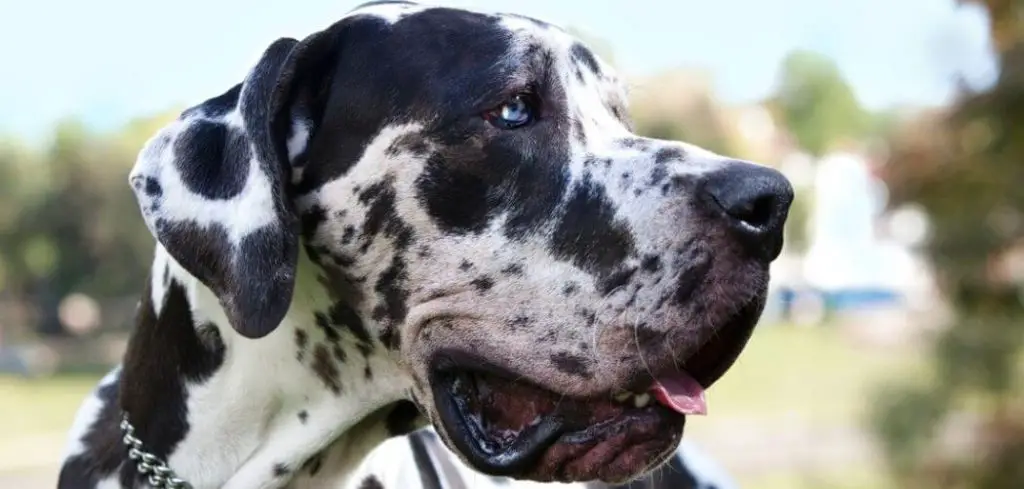Panting is a normal way for dogs to cool down—but when it’s paired with aggression, it can feel alarming and confusing.
Understanding the root causes of this combination of symptoms can help protect both your dog and others around them.
We outline the most common reasons why dogs pant and display aggressive behavior, what you can do at home to address these issues, and when to seek veterinary help.
Table of Contents
Dog Panting and Aggression — Why It Happens
Dog panting combined with aggression may be due to fear, pain, anxiety, territorial behavior, or medical conditions such as cognitive dysfunction or hormonal imbalance.
Dogs may pant heavily in high-stress situations, and if they feel threatened or are in discomfort, this may escalate into growling, snapping, or biting.
It’s essential to pay close attention to the context and body language your dog displays.

Common Causes of Dog Panting and Aggressive Behavior
Fear or Anxiety
Dogs who are fearful or anxious often pant as a physiological stress response. If your dog is cornered, overwhelmed, or triggered by a past trauma, they might escalate from panting to defensive aggression.
Common triggers include loud noises, strangers, other animals, or being restrained. Rescue dogs or those with limited socialization may be more prone to this response.
Related: Dog panting excessively (Causes and What To Do)
Pain or Discomfort
A dog in pain may become irritable or aggressive—especially when touched. Panting is a common sign of discomfort or inflammation.
Pain-related aggression is often seen in dogs with arthritis, dental issues, internal injuries, or undiagnosed illnesses. Watch for other signs like limping, licking at specific areas, or avoiding stairs.
Resource Guarding
Dogs may pant and become aggressive when guarding food, toys, or space. This behavior, known as resource guarding, is rooted in survival instinct.
A dog might growl or snap when someone approaches their bowl or favorite spot. The panting may be related to arousal, stress, or the anticipation of needing to defend their resource.
Canine Cognitive Dysfunction (Dog Dementia)
Older dogs may develop cognitive issues that cause confusion, disorientation, and behavioral changes.
A dog with dementia may pant due to stress or confusion and act unpredictably—including displaying aggression toward family members. You might also notice pacing, staring at walls, or toileting accidents.
Hormonal or Neurological Issues
Conditions like Cushing’s disease, hypothyroidism, or brain tumors can influence a dog’s behavior.
Cushing’s often causes excessive panting, while hypothyroidism has been linked to irritability or aggression. Seizure disorders or tumors may affect a dog’s brain chemistry, causing unpredictable or reactive behavior.
Overstimulation or Arousal
Some dogs become overly excited, especially during play or high-energy environments. This arousal can result in heavy panting and nipping or growling.
While not always true aggression, it can become dangerous—especially with children or other pets. Teaching impulse control is key to managing this behavior.
Read more: Old Dog Panting and Acting Weird (Could it be dementia?)
What to Do If Your Dog Is Panting and Acting Aggressive
First, ensure everyone’s safety. Avoid confronting or punishing your dog while they’re aroused or aggressive. Give them space to calm down in a quiet area.
Observe their body language—are they avoiding eye contact, holding their tail stiffly, or licking their lips? These signs can help identify the trigger.
Try to remove or reduce the stressor, whether it’s another dog, a visitor, or an object. Once calm, take note of the context and frequency of the behavior.
Record videos if possible to share with your vet or a behaviorist, as it helps them identify patterns and severity.
When to Call or Visit Your Vet
Contact your vet or a certified animal behaviorist if:
The behavior appears suddenly with no clear trigger.
Your dog has never shown aggression before.
Panting occurs frequently even at rest or in cool environments.
There are signs of pain, confusion, or physical illness.
Your dog becomes aggressive with family members or other pets.
Your vet may conduct a physical exam, blood work, or imaging to rule out medical causes. Behavior professionals can develop a training plan to address fear or reactivity.
Key Takeaway
Dog panting and aggression often stem from fear, pain, anxiety, or medical conditions—not from a desire to be “dominant.”
Understanding your dog’s triggers and behavior patterns is the first step in resolving the issue.
With the right care and support, most dogs can return to a calmer, more predictable state.
